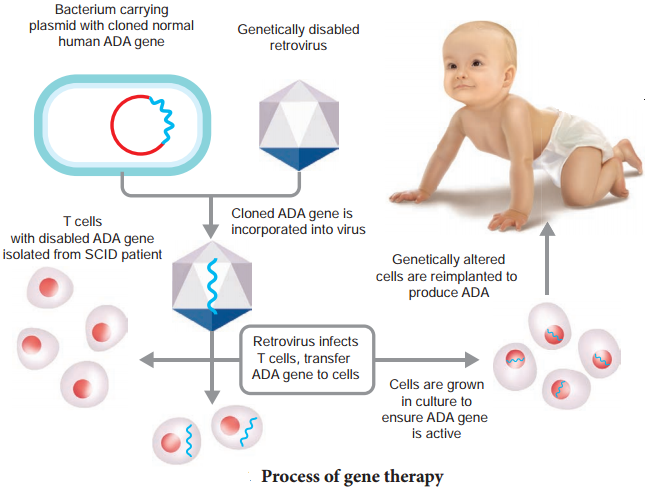Learninsta presents the core concepts of Biology with high-quality research papers and topical review articles.
Biotechnology Of Gene Therapy
If a person is born with a hereditary disease, can a corrective therapy be given for such disease? Yes, this can be done by a process known as gene therapy. This process involves the transfer of a normal gene into a person’s cells that carries one or more mutant alleles. Expression of normal gene in the person results in a functional gene product whose action produces a normal phenotype.
Delivery of the normal gene is accomplished by using a vector. The main thrust of gene therapy has been directed at correcting single gene mutations as in cystic firosis and haemophilia. At present most genetic diseases have no effective treatment and so gene therapy could offer hope for many people.
There are two strategies involved in gene therapy namely; Gene augmentation therapy which involves insertion of DNA into the genome to replace the missing gene product and Gene inhibition therapy which involves insertion of the anti sense gene which inhibits the expression of the dominant gene (Fig. 9.3). The two approaches to achieve gene therapy are somatic cell and germ line gene therapy.

Somatic cell therapy involves the insertion of a fully functional and expressible gene into a target somatic cell to correct a genetic disease permanently whereas Germline gene therapy involves the introduction of DNA into germ cells which is passed on to the successive generations. Gene therapy involves isolation of a specific gene and making its copies and inserting them into target cells to make the desired proteins.
It is absolutely essential for gene therapists to ensure that the gene is harmless to the patient and it is appropriately expressed and that they body’s immune system does not react to the foreign proteins produced by the new genes.